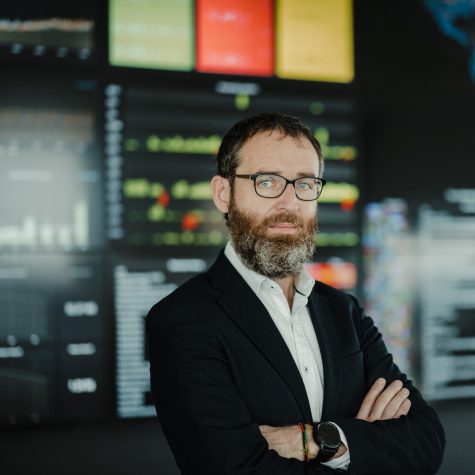AI Threats and Cybersecurity: Protecting the Digital World

- 3 December 2024
By Celia Pizzuto
As AI shapes both innovation and risk, the threat landscape of cybercrime is rapidly evolving. Michal Pechoucek, Chief Technology Officer at Gen™, a leading cybersecurity firm formed from the merger of NortonLifeLock and Avast, delivered an insightful presentation on the evolving landscape of AI threats and the measures being taken to protect individuals from these dangers. Speaking at the 2024 AI for Good Global Summit, Pechoucek emphasized the increasing sophistication of AI-driven cyber threats and the essential role of advanced cybersecurity solutions.
Pechoucek, addressed the heightened responsibility to shield people from the negative consequences of AI. “I resemble kind of a good part of responsibility to helping people to be protected against the negative consequences of what AI can do to people,” he stated.
The Four Major AI Threats
Pechoucek outlined four significant AI-related threats that cybersecurity professionals are grappling with:
- Weaponized AI: Attackers and malware writers are increasingly using generative AI and other advanced AI techniques to create more lethal and effective malicious software. “These people are crafting lethal, effective, dangerous pieces of malware and threats using generative AI,” Pechoucek explained.
- AI System Vulnerabilities: Many AI systems, which manage critical infrastructure and applications, are not fully transparent or predictable, making them susceptible to attacks. Pechoucek warned, “We don’t fully understand how they work, and as a result, they are full of vulnerabilities.”
- New Software Vulnerabilities: The rapid adoption of AI-powered co-pilots and generative models in software development introduces new, uncharted vulnerabilities. “This is the biggest software change, introducing new vulnerabilities that we still don’t understand, and attackers are just waiting to exploit,” he noted.
- AI for Attacking Human Minds: Cybercriminals are increasingly targeting human cognition through sophisticated social engineering attacks, phishing scams, and other manipulative tactics. “Attackers are really focused on the human mind and human cognition, trying to manipulate people,” Pechoucek said.
The Rising Threat of AI-Driven Scams
One of the most pressing issues discussed was the surge in AI-driven scams, which Pechoucek described as a “scam pandemic.” He cited Warren Buffett, who predicted that AI-empowered scamming would be the next big growth industry.
“Protecting people against AI scamming is going to be the next big cybersecurity industry,” Pechoucek stated, highlighting the urgency of addressing this threat.
Pechoucek detailed the various types of scams proliferating today, including romance scams, investment scams, fake e-commerce sites, extortion scams, and impersonation scams. He shared alarming statistics from the Federal Trade Commission (FTC), noting that out of 5.4 million reports, 2.6 million were scam-related, resulting in significant financial losses.
Gen™’s AI-Powered Solutions
To combat these threats, Gen™ has developed proprietary AI models trained on years of cybersecurity data. These models power a comprehensive scam detection and prevention app, which Pechoucek referred to as a “scam companion.” This tool helps users identify and avoid scam messages across various platforms, including emails, texts, and social media.
“It’s a companion that detects what this situation contains as a scam and drives a discussion with the user,” Pechoucek explained.
The AI technology not only focuses on detecting scams but also on preventing them and educating users. “It’s very important that the AI helps people grow in their knowledge, distributing scam awareness,” he emphasized.
The Changing Face of Cybersecurity
Pechoucek concluded with a stark message: the nature of cybersecurity is fundamentally changing due to AI.
“Cybersecurity as we knew it is changing,” he declared.
He noted that while AI makes cyberattacks more efficient and less costly, it also necessitates a shift in how we approach digital safety.
“The change that AI is bringing is that it’s not AI attackers versus AI defenders only,” Pechoucek stated. He stressed the importance of user engagement and participation in cybersecurity efforts, emphasizing the need for people to actively participate, share data on their threats, and understand the dangers to maintain their safety.
Collaboration between AI technology and human users is essential to ensuring the best possible digital safety, emphasizing that safety can only be achieved when AI works in partnership with people to protect everyone on the internet. Pechoucek’s session highlighted the evolving landscape of AI threats and the innovative solutions being developed to counteract these dangers. As cyber threats continue to grow in complexity, the collaborative efforts between AI technologies and human vigilance will be essential in maintaining a secure digital environment.

















